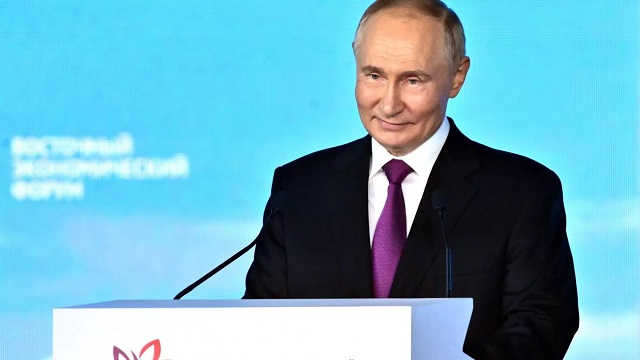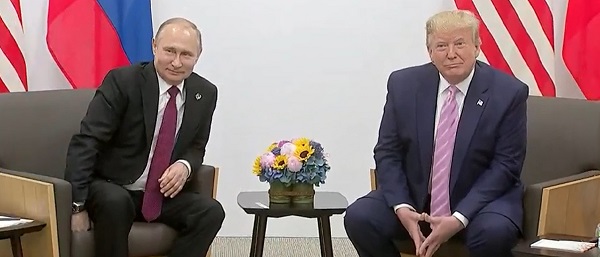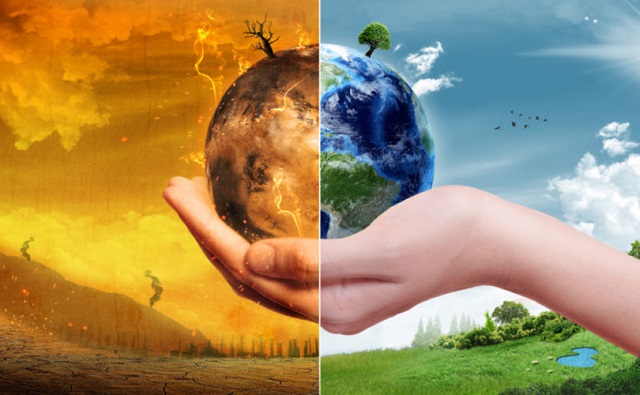International
Why You Shouldn’t Fret Much Over Russian Election Interference

From The Rattler
By J.D. Tuccille
Governments are always screwing with other countries politics. It’s often ineffective.
If you missed the news, Russians are interfering in American politics again. If you missed history, Russians are always interfering in other countries’ politics—and so is everybody else, including the U.S. Screwing around with foreign elections is a popular sport for the world’s regimes, though it’s not clear that websites, bogus social media accounts, and funds funneled to a political-commentary network will return more bang for Putin’s rubles than did past social media shenanigans.
Russia, Again
“The Justice Department today announced the ongoing seizure of 32 internet domains used in Russian government-directed foreign malign influence campaigns colloquially referred to as ‘Doppelganger,’ in violation of U.S. money laundering and criminal trademark laws,” according to a September 4 government press release. “In conjunction with the domain seizures, the U.S. Treasury Department announced the designation of 10 individuals and two entities as part of a coordinated response to Russia’s malign influence efforts targeting the 2024 U.S. presidential election.”
The indictment specified “the defendants, have deployed nearly $10 million, laundered through a network of foreign shell entities, to covertly fund and direct U.S. Company-I [which] publishes English-language videos on multiple social media channels, including TikTok, Instagram, X, and YouTube.”
“Many of the videos published by U.S. Company-I contain commentary on events and issues in the United States, such as immigration, inflation, and other topics related to domestic and foreign policy,” adds the indictment. “While the views expressed in the videos are not uniform, the subject matter and content of the videos are often consistent with the Government of Russia’s interest in amplifying U.S. domestic divisions in order to weaken U.S. opposition to core Government of Russia interests, such as its ongoing war in Ukraine.”
Based on details in the indictment, Company-1 has been identified as Tenet Media (since shuttered), which managed a stable of right-wing pundits including Lauren Southern, Tim Pool, Taylor Hansen, Matt Christiansen, Dave Rubin, and Benny Johnson. The company promoted, the indictment says, “nearly 2,000 videos that have garnered more than 16 million views on YouTube alone.”
Very nefarious, right? Well, maybe not. While Tenet founder Lauren Chen has gone quiet and lost her gig with Blaze TV and channels on YouTube, Tenet’s contributors seem baffled by the whole thing.
“The Culture War Podcast was licensed by Tenet Media, it existed well before any license agreement with Tenet and it will continue to exist after any such agreement expires,” insists Tim Pool. “Never at any point did anyone other than I have full editorial control of the show.”
Benny Johnson also says, “I am the only person who ever had editorial control of my program.”
Translated Russian documents outlining a “guerilla media campaign in the United States” caution their intended audience that “in the United States there are no pro-Russian and/or pro-Putin mainstream politicians or sufficiently large numbers of influencers and voters. There is no point of justifying Russia and no one to justify it to.” The campaign was meant to exploit “the high level of polarization of American society” by paying commentators to say things they were already saying.
It’s not clear they got a lot of mileage from that program.
Not a Lot of Bang for the Ruble
“Numbers like those might sound impressive,” independent journalist Ken Klippenstein wrote of the Tenet pundits drawing 16 million YouTube views after receiving $10 million. “But my Twitter analytics informs me that over the past year, my posts garnered 463 million views. So Russia’s dastardly scheme reached a small fraction of the people my dumbass posts do.”
That’s typical for foreign meddling in our already messy domestic politics.
“It would appear unlikely that the Russian foreign influence campaign on Twitter could have had much more than a relatively minor influence on individual-level attitudes and voting behavior,” concluded a 2023 analysis of Russian interference in the 2016 election published in the journal Nature Communications. The authors added, “we did not detect any meaningful relationships between exposure to posts from Russian foreign influence accounts and changes in respondents’ attitudes on the issues, political polarization, or voting behavior.”
In 2020, foreign influencers worked against each other, including supposed allies in the latest Axis of Evil. A 2021 report from the government’s National Intelligence Council, which reports to the Office of the Director of National Intelligence (ODNI), found “Russian President Putin authorized, and a range of Russian government organizations conducted, influence operations aimed at denigrating President Biden’s candidacy and the Democratic Party” while “Iran carried out a multi-pronged covert influence campaign intended to undercut former President Trump’s reelection prospects.” Also meddling were forces including “Lebanese Hizballah, Cuba, and Venezuela.”
This sort of sounds like a cost-effective means of funding U.S. elections—just let foreign intelligence operations pay for them. But the ODNI report cautioned these schemes “undermine public confidence in the electoral process and US institutions, and sow division and exacerbate societal tensions in the US.” Which means getting us upset and pointing fingers about foreign interference is a goal of these schemes.
The same can almost certainly be said when U.S. agencies join the fun.
Election Interference Is a Game the U.S. Also Plays
“I was alarmed in 2016 by how policymakers and commentators frequently described Russian interference in our election as unprecedented,” according to the Wilson Center’s David Shimer, who wrote Rigged (2020) on the topic. “Many former CIA officers told me in interviews that they viewed the ’48 operation in Italy as the agency at its best. And in the aftermath of that operation, as the CIA’s chief internal historian put it to me, the agency and the KGB went toe to toe in elections all over the world.”
The National Endowment for Democracy, founded by Congress in 1983, is “dedicated to fostering the growth of a wide range of democratic institutions abroad, including political parties, trade unions, free markets and business organizations.” It does so through “grants to support the projects of non-governmental groups abroad.” I find the NED and its goals less troublesome than those of Russians funding U.S. political pundits, but I bet lots of people elsewhere disagree. Fundamentally, it’s all part of the same international contest to screw with the internal debates of allies and adversaries alike.
So, take reports of Russian interference in American elections with a grain of salt, knowing that Putin is paying Americans to say what they already believe, and the U.S. does the same in other countries. Importantly, none of that interference prevents you from making your own decisions.
|
|
Daily Caller
Trump, Putin Agree On High-Stakes Meetings To Negotiate End To Ukraine War


From the Daily Caller News Foundation
President Donald Trump and Russian President Vladimir Putin agreed to a pair of high-stakes meetings next week in order to negotiate an end to the Ukraine war, Trump said on Truth Social Thursday.
Trump will meet with Putin in Budapest, Hungary after an initial round of negotiations between Russian advisors and U.S. diplomats led by Secretary of State Marco Rubio next week, the president said in his post. Trump is set to meet with Ukrainian President Volodymyr Zelenskyy on Friday to discuss the war and his conversation with Putin.
“The United States’ initial meetings will be led by Secretary of State Marco Rubio, together with various other people, to be designated. A meeting location is to be determined,” Trump said in his post. “President Putin and I will then meet in an agreed upon location, Budapest, Hungary, to see if we can bring this ‘inglorious’ War, between Russia and Ukraine, to an end.”
“President Zelenskyy and I will be meeting tomorrow, in the Oval Office, where we will discuss my conversation with President Putin, and much more. I believe great progress was made with today’s telephone conversation,” he wrote.
Putin congratulated Trump on the historic deal between Hamas and Israel, and thanked First Lady Melania Trump for her work on protecting children in Ukraine, the president said in his post.
Trump said Wednesday that India will stop buying Russian oil, a deal that the administration said was fueling the war effort in Ukraine.
The meeting will mark Putin’s first visit to any European Union member state since before the invasion of Ukraine, when he attended a summit in Germany on the subject of peace.
International
Climate contrarians have the president’s ear

Made-in-American climate assessment challenges IPCC modelling, introducing alternative projections and recommendations that are shaping national conversations on environmental strategy and scientific credibility.
At the end of July, the U.S. Department of Energy (DOE) released a report on climate change that seemed surprisingly optimistic.
There’s good news and bad news. First, the bad news: We only have five years to live.
That’s according to U.S. Congresswoman Alexandria Ocasio-Cortez, who, you may recall, warned in January 2019: “The world is going to end in 12 years if we don’t address climate change.”
The good news is that AOC may have been exaggerating just a wee bit. And so has the Intergovernmental Panel on Climate Change (IPCC), according to the DOE’s Climate Working Group.
That’s my layman’s interpretation of what the 150-page DOE report says.
It mainly takes issue with climate models used by the IPCC. These models run too “hot” and, as a result, predict things like temperatures or extreme weather events that are not borne out by observation.
The report also notes that the IPCC appears to bury one positive consequence of more CO2 in the atmosphere: global “greening.”
They also question the assumptions that a warming planet necessarily has led to – or will lead to – increased extreme weather events.
Now, it should be noted that the report’s five authors are considered climate science heretics and contrarians, and their report has been dismissed and repudiated by 85 establishment scientists as “misleading or fundamentally incorrect.”
I would note that two of the group’s five authors — John Christy and Judith Curry — have both contributed to past IPCC assessments as lead or contributing authors. They’re not cranks – they are legit climate scientists who just happen to disagree with the “consensus” on some basic points.
The report was commissioned by U.S. Energy Secretary Chris Wright to provoke “a more thoughtful and science-based conversation about climate change and energy.”
“What I’ve found is that media coverage often distorts the science,” Wright says in a foreword to the report.
One such distortion is the repeated use of a worst-case scenario for warming (RCP8.5) that is considered so unlikely as to be “implausible,” but which produces better headlines and gets more grants than more probable, less scary scenarios for warming.
The five scientists and academics selected for the DOE’s climate working group are well-known for their climate science heterodoxy — Christy, Curry, Steven Koonin, Roy Spencer and Ross McKitrick (the sole Canadian on the team.)
Neither Wright nor the report’s authors deny the climate is changing. That would be hard to do. The earth has been warming ever since we came out of the last Ice Age.
The $122 trillion question is just how much the more recent heating has been the result of burning of fossil fuels. (It’s estimated that to hit net zero targets, we will need to spend US$3.5 trillion a year until 2050.)
“Climate change is real, and it deserves attention,” says Wright in the report. “But it is not the greatest threat facing humanity. That distinction belongs to global energy poverty.”
Pay attention, Canada. Like it or not, this is where America’s head is at right now. It is bumping climate action down the priority list and bumping up energy security and affordability, and if our own policies on environment and energy are too misaligned with America’s, we will continue to put our economy at a disadvantage.
Polling confirms there has been shift in attitude in just the last couple of years on climate and energy. On the hierarchy of fears, it appears climate change no longer tops the list.
Even Greta Thunberg took a sabbatical from climate activism to go fight the Israelites from a flotilla of diesel-burning boats in the Levant.
The climate catastrophism and alarmism that reached peak mania in 2019 may have led to both fatalism and fatigue. The DOE report goes some way to explaining where this fatigue and fatalism may be coming from.
Basically, it comes from environmentalists, politicians and the media taking worst-case scenarios from the IPCC and scaring the shit out of everyone with apocalyptic doomsaying.
Here are some highlights of the report, as I see it:
- modeling used by the IPCC may be tuned too “hot,” resulting in predicted global temperature increases that are not borne out by observable temperature data;
- IPCC assessments downplay the positive consequences of global “greening” resulting from increased amounts of CO2 in the atmosphere;
- worst-case scenarios for warming used by the IPCC are wholly improbable; and
- There is no evidence of long-term extreme weather events as a consequence of warming.

According to the DOE report, the models used by the IPCC for predicting climate sensitivity to CO2 predict temperature increases that are higher than actual observed temperature increases.
“The combination of overly sensitive models and implausible extreme scenarios for future emissions yields exaggerated projections of future warming,” the authors conclude.
When I reached McKitrick by phone, he explained what they mean by running too hot.
“There is a long-standing, almost universal pattern among the models, overstating the response to CO2 in the troposphere,” McKitrick told me. “Models warm too much. The models exhibit too much warming in response to rising CO2 and that also translates into too much surface warming.”
In more recent assessments, the IPCC has used a range of scenarios to predict how the planet might respond to increased GHGs. These scenarios – called Representative Concentration Pathways – range from RCP2.6 to RCP8.5.
RCP2.6 predicts global warming of below 2 degrees Celsius above pre-industrial temperatures. RCP8.5 predicts temperature increases of 5 degrees between 1900 and 2100 — which might indeed produce some hellish consequences.

AOC and Thunberg would be right to worry about this kind of temperature increase, if it were remotely plausible, and if nothing were being done to address GHG emissions.
The report notes that RCP8.5 came to be referred to as the no-policy baseline, or “business-as-usual” scenario. That’s the scenario in which nothing is done to try to reduce emissions.
But things are being done to reduce emissions. Efforts are being made the world over to adopt electric cars, phase out coal power, install wind and solar power, and capture and store CO2. So this worst-case scenario is probably not useful.
“The problem is, it’s routinely used in a lot of academic articles as what they call the business as usual outcome,” McKitrick said. “And most of the climate impact stories you see in the press are based on studies running RCP8.5. So you get these lurid outcomes of total devastation.
“It’s not just the IPCC. That’s a problem with the literature as a whole. Authors want to have the big, frightening splashy result, and then their article will get written up in the press.”
In 2020, Zeke Hausfather and Glen Peters wrote in Nature that the overuse of RCP8.5 as a business scenario “has resulted in a large number of misleading studies and media reporting.”
They characterized RCP8.5 as “implausible.”
“We must all …stop presenting the worst-case scenarios as the most likely one,” Hausfather and Peters wrote. “Overstating the likelihood of extreme climate impacts can make mitigation seem harder than it actually is.”
In other words, everyone reporting on climate change needs to tone things down a little. You’re scaring the children.
The DOE report criticizes the IPCC for downplaying one positive result of increased CO2 in the atmosphere — global greening.
It notes that “CO2 fertilization” had driven an increase in observed global photosynthesis by 30% since 1900, “versus 17% predicted by plant models.”
“The IPCC has minimally discussed global greening,” the authors note, but it is omitted in IPCC summary documents. These summary documents are the only ones that non-scientists (like journalists and politicians) tend to read, so it’s a bit of a buried story.
“This is a very important topic because rising CO2 levels have contributed to a massive greening of the planet,” McKitrick said. “On the agricultural front, there’s evidence that it has contributed substantially to crop productivity. And it also makes plants more tolerant to heat.
“There’s nothing controversial about those statements. They’re well established. But it’s never been pointed out in IPCC summaries.”
As for extreme weather events, modelling suggests that a warming planet should result in increased frequency and severity of things like hurricanes, droughts, and floods.
The report concludes that observational data suggests no long-term trend with respect to extreme weather events:
“Most extreme weather events in the U.S. do not show long-term trends,” the report states. “Claims of increased frequency or intensity of hurricanes, tornadoes, floods, and droughts are not supported by U.S. historical data.”
Generally, the DOE report posits a “lukewarmer” position on climate change – i.e. that the earth is warming, but that this may be more the result of natural causes, like solar activity, and less likely the result of CO2.
If this position is correct, it means the world will have spent trillions already on an energy transition that wasn’t necessary.
If this theory is wrong, then that investment in decarbonization and the energy transition is basically an insurance policy.
Nelson Bennett’s column appears weekly at Resource Works News. Contact him at [email protected].
-

 National2 days ago
National2 days agoDemocracy Watch Renews Push for Independent Prosecutor in SNC-Lavalin Case
-

 Alberta2 days ago
Alberta2 days agoClick here to help choose Alberta’s new licence plate design
-

 International1 day ago
International1 day agoHamas will disarm or die
-

 illegal immigration1 day ago
illegal immigration1 day agoLos Angeles declares a state of emergency over ICE deportations
-

 International1 day ago
International1 day agoUS Warns Hamas To Halt Executions
-

 International2 days ago
International2 days agoDaughter convinces healthy father to die in double assisted suicide with mother
-

 Business1 day ago
Business1 day ago‘Taxation Without Representation’: Trump Admin Battles UN Over Global Carbon Tax
-

 International1 day ago
International1 day agoItaly set to outlaw Islamic face coverings nationwide








